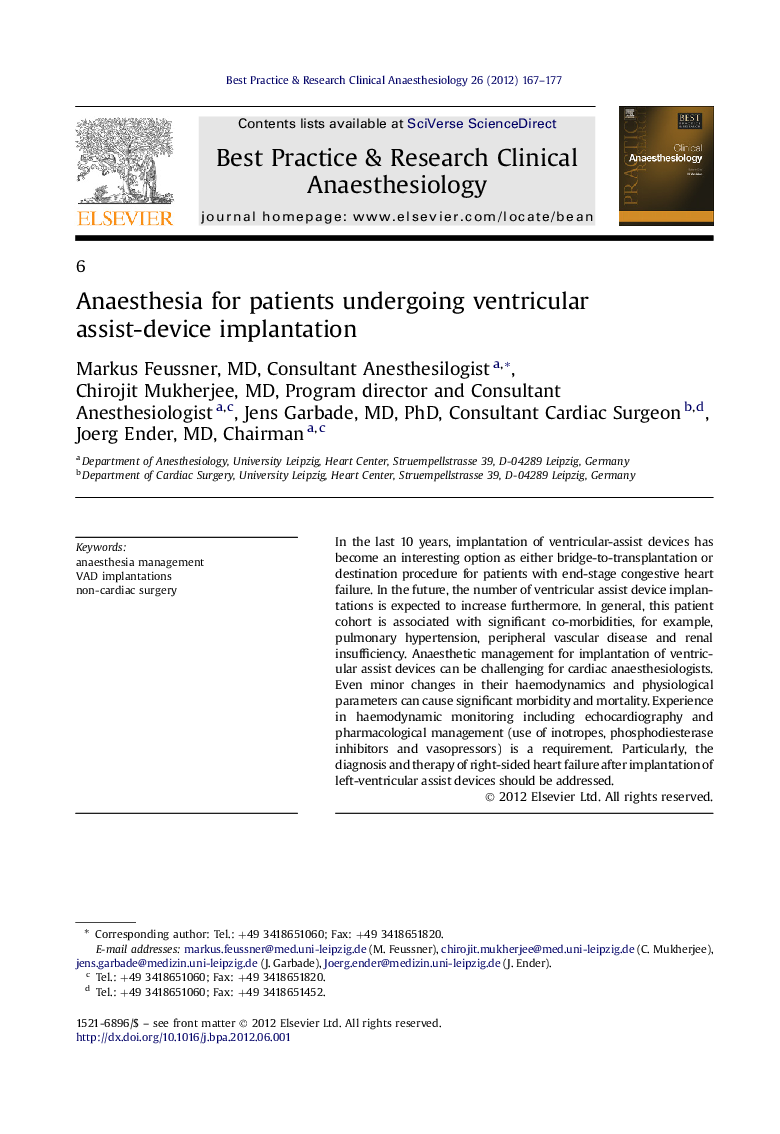| Article ID | Journal | Published Year | Pages | File Type |
|---|---|---|---|---|
| 2748466 | Best Practice & Research Clinical Anaesthesiology | 2012 | 11 Pages |
In the last 10 years, implantation of ventricular-assist devices has become an interesting option as either bridge-to-transplantation or destination procedure for patients with end-stage congestive heart failure. In the future, the number of ventricular assist device implantations is expected to increase furthermore. In general, this patient cohort is associated with significant co-morbidities, for example, pulmonary hypertension, peripheral vascular disease and renal insufficiency. Anaesthetic management for implantation of ventricular assist devices can be challenging for cardiac anaesthesiologists. Even minor changes in their haemodynamics and physiological parameters can cause significant morbidity and mortality. Experience in haemodynamic monitoring including echocardiography and pharmacological management (use of inotropes, phosphodiesterase inhibitors and vasopressors) is a requirement. Particularly, the diagnosis and therapy of right-sided heart failure after implantation of left-ventricular assist devices should be addressed.
